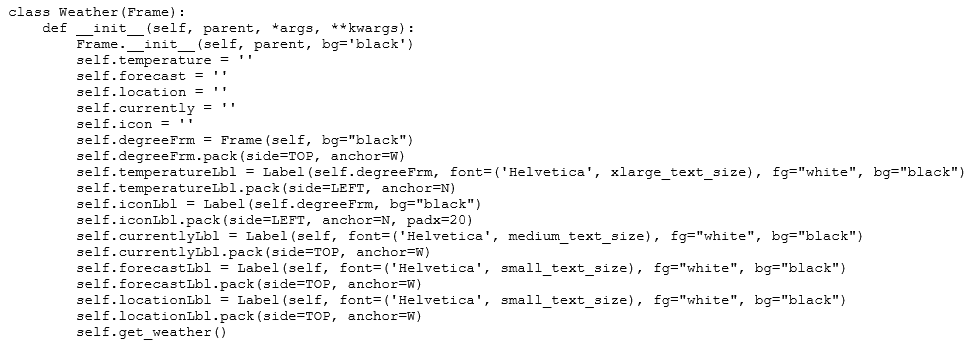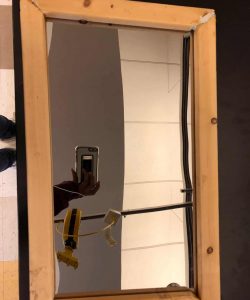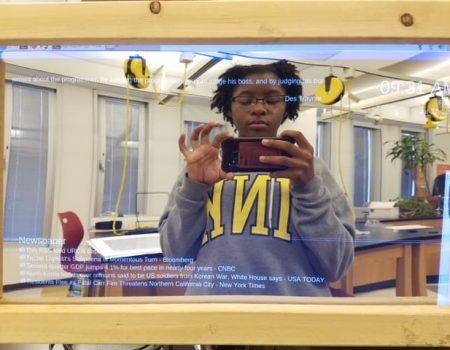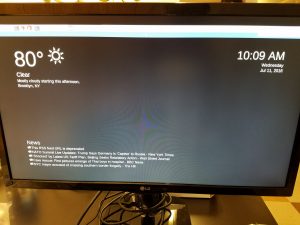REFLECTION
Finishing my Smart Mirror was a significant part of becoming an engineer because it was the first time I had hands on experience with different power tools and software. Before starting these projects at BlueStamp, I did not have much experience in the digital engineering fields but after finishing this awesome project I now have a better understanding of computer science, programming and coding.Working on this project at BlueStamp has inspired me to look for and take advantage of opportunities to improve my skills and find my passion. Additionally, I met many outstanding instructors and students who share the same interest as me, as a result , have motivated me to continue to pursue my passions and excel at my passions in the engineering field.
My Time At BlueStamp
Final Milestone
For my third and final milestone, I added a non-default custom module to my Smart Mirror.
Specifically, I added daily quotes from authors, celebrities, and philosophers to appear on my Smart Mirror. Adding a daily quote to the Smart Mirror was a significant milestone because it taught me exactly how to add more features onto my mirror in the future.To reach this milestone, I requested an API token from https://quotesondesign.com/ and gained access to over a thousand random quotes.Next, on my Raspberry Pi, I opened my Python script in Thonny IDE which, similar to VIM in terminal, enables me to access the Smart Mirror script and edit it.Lastly, I used the quotesondesign URL and the previous code example from the news weather and location to write the code for the daily quotes.
Using this example, I better understood how to get the daily quotes to display on the Smart Mirror by simply changing the class and variables used on the quoteondesign website.
See link here: http://quotesondesign.com/api/3.0/api-3.0.json?callback=my_function
Through this project, I learned more about how to code in Python and, more specifically, different calls to get the quote to show up on the screen.Some examples of the calls I have used in my script were class def and (self).
See Figure 1:

Second Milestone
SECOND MILESTONE
For my Second Milestone, I constructed a frame for the Smart Mirror.Building the frame is one of the fundamental parts of building the Smart Mirror because it gives it a more realistic, everyday mirror feel. Using HackerShacks Smart Mirror project tutorial, I reviewed the tools and materials I needed to build the frame such as wood planks, elastic straps, a wood saw, and an acrylic see-through mirror.
See link here: https://www.youtube.com/watch?v=fkVBAcvbrjU&t=497s
Using a wood saw, I cut wooden planks with angled ends to fit the size of the mirror for the frame. See Figure 1.
The see-through acrylic mirror allowed the contents of the mirror to show through while also being a reflective surface.Next, using a Dremel, a power tool used for its rotary power, I cut the semi-transparent acrylic to align with the monitor screen and frame. To reinforce the acrylic onto the mirror I hot glued it onto the inner workings of the frame. Lastly, after making the basic framework I measured and hot glued elastic straps to the top and bottom of the frame. This made placing the frame onto the monitor much easier and less time-consuming. Through completing this part of the project, I learned the importance of taking precise measurements before cutting materials. Originally when I cut the wood for the frame I didn’t measure each side to a 45 degree angle. This resulted in the corners of the mirror being slightly misaligned and not being exact 90 degree angles. This is important because without precise measurement you can waste more time cutting materials afresh and risk overcutting which will cause avoidable difficulties. I also learned how to function and the use of power tools such as the dremel and the wood saw.
See finished product










